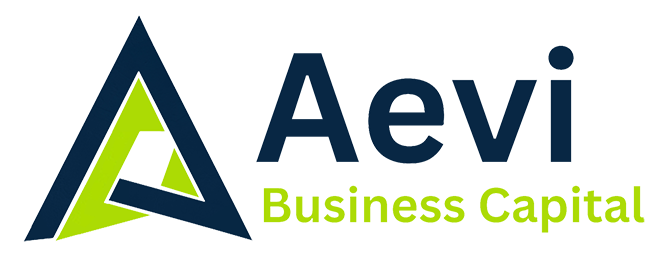Money management becomes more stressful during the final stretch of the year. For small and mid-sized businesses, the pressure builds quickly as the holiday season adds new layers of spending, staffing, and planning. When cash flow already feels tight, even small disruptions can have a big impact. That is where help from a cash management solutions company can make a clear difference. By setting up systems and structure, we can keep better control over daily finances without feeling buried by the details. The daily grind of tracking every expense, payment, and deposit does not have to be so hard when the right support is in place.
Organizing Daily Operations with Better Cash Flow Tools
Most businesses know how important it is to keep money moving, but many do not have tools that make that easy to track. We see too many shops and offices using outdated spreadsheets or juggling multiple accounts without a plan. It is exhausting to guess where your finances stand, especially when urgent payments sneak up on you.
A better setup allows for:
• Tracking what is coming in and what is going out in real time
• Seeing patterns that help predict when money might run low
• Planning ahead for things like payroll, big supply purchases, or seasonal inventory
These basic tools do not require expensive upgrades. They just give business owners a clear picture of what is happening with their money, so they can make smart decisions before problems show up.
One area where we support businesses is with payment processing solutions, simplifying daily operations and helping clients better control cash flow through our trusted technology partners.
Planning Ahead During Seasonal Highs and Lows
Fall and early winter always bring changes in momentum for most businesses. For some, this is the beginning of the busiest quarter. For others, it is the slowdown before a new year starts to build again. Either way, the transitions matter.
Smart planning during this time helps avoid last-minute funding gaps. Instead of taking on surprise debt when cash runs low, companies can set money aside or stretch timing so everything balances out. That might look like slowing spending in late October or holding back on larger orders until early December.
It also helps businesses:
• Stock the right amount of products for shoppers without overextending
• Stay fully staffed for the holiday rush without risking delayed payroll
• Prep for January with enough breathing room to make adjustments if things shift again
When you plan for ups and downs, the surprises feel smaller. That sense of control over timing and spending is a big relief during busy seasons.
Reducing Stress with Simple Payment and Collection Systems
It is easy to lose track of payment schedules when you are busy. Bills pile up, a check goes missing, or an invoice does not get sent on time. Small gaps like these add up quickly and can become a headache if they start stacking every month.
A good cash management solutions company helps put automation in place so these tasks do not get forgotten. That can include setting up automatic payments for vendors or reminders for upcoming due dates. On the collection side, it might mean online invoices that track when clients open them and send gentle nudges.
This kind of setup helps businesses:
• Avoid late fees, interest, or service interruptions
• Stay consistent with vendor relationships
• Keep up with customer payments without hounding anyone
We connect clients with digital solutions that automate incoming and outgoing payments to minimize missed deadlines or overlooked invoices.
With payment tasks off your plate, there is more space to focus on customers and projects instead of trying to remember which bills have not been paid yet.
Keeping Business Loans and Financing Easier to Manage
When a business starts thinking about funding, clear records make a real difference. Whether it is a loan or another kind of financial help, lenders want to see that everything is organized. Consistent tracking of money in and out helps paint a full picture of your business’s health.
Simple steps like keeping monthly summaries and reconciling accounts mean that when it is time to share financials, nothing feels rushed. It also shows that the business takes its operations seriously, which is something lenders notice. The application process gets easier, and the terms offered tend to reflect that stability.
In many cases, businesses that keep solid records may have an easier time:
• Qualifying again in the future after successful repayment
• Requesting better terms or negotiating length of repayment
• Exploring more than one financing option confidently
We leverage our nationwide relationships to match clients with cash solutions that suit their financial records, seasonal needs, and business stage.
Skipping this groundwork often leads to more trouble later. A little effort now brings better flexibility when new opportunities or challenges show up.
Bringing Clarity to Year-End Finances
With the end of the year just ahead, November is one of the best times to do a clean sweep of your financials. It is not about perfection, but better preparation makes tax season and goal setting far less overwhelming.
At this point in the season, businesses can:
• Make sure income and expenses are logged clearly
• Flag anything unusual for review before it becomes harder to fix
• See where spending might change for the months ahead
Getting a grip before the calendar turns lets you enter the new year with a fresh foundation. If anything has gotten off track during busy months, now is the moment to fix it.
Organized year-end records also help with setting goals. Whether it is cutting back spending, growing next quarter, or hiring better support, those plans land easier when built from clean numbers.
How Reliable Financial Systems Help Your Business Grow
Owning a business can feel like you are supposed to handle every task yourself. But managing money does not have to be a solo job. Letting others help with setup and structure can bring lasting peace of mind.
The more consistent your systems become, the easier it is to plan, and to breathe. You stop reacting and start preparing. That shift matters when seasons speed up or when new chances appear out of nowhere.
Solid cash practices now help you stay steady for whatever comes next. And with the year coming to a close, there is no better time to make sure your finances are clear, simple, and moving with you, not against you.
Managing your business finances does not have to be overwhelming. With the right tools and support, things like payment processing, planning for seasonal changes, and organizing records for funding become much more manageable. Partnering with a cash management solutions company means you can streamline your processes and reduce stress. At Aevi Consulting, we are dedicated to keeping your financial systems steady so you can stay focused on what matters most, growing your business. Reach out to us today to get started.










